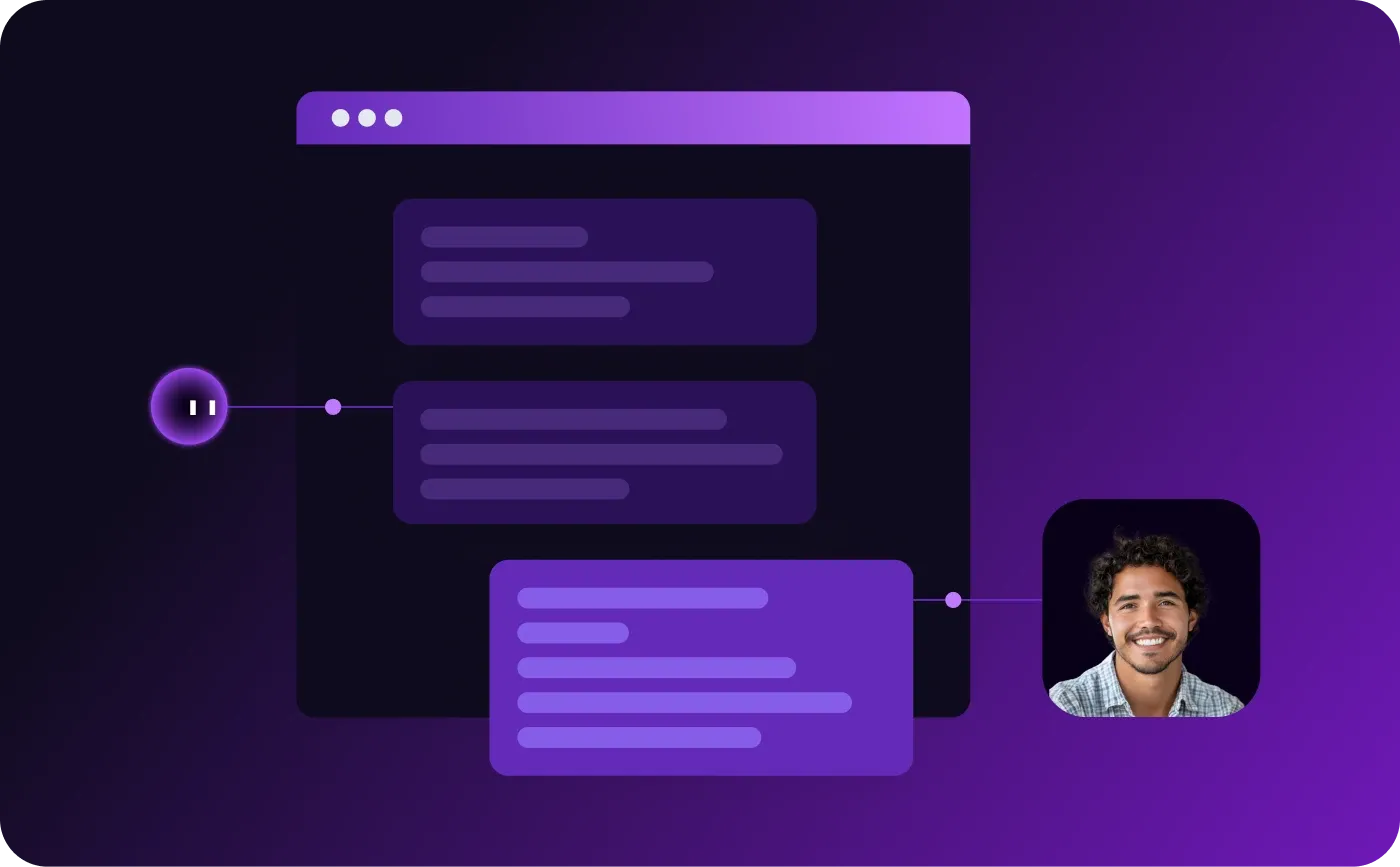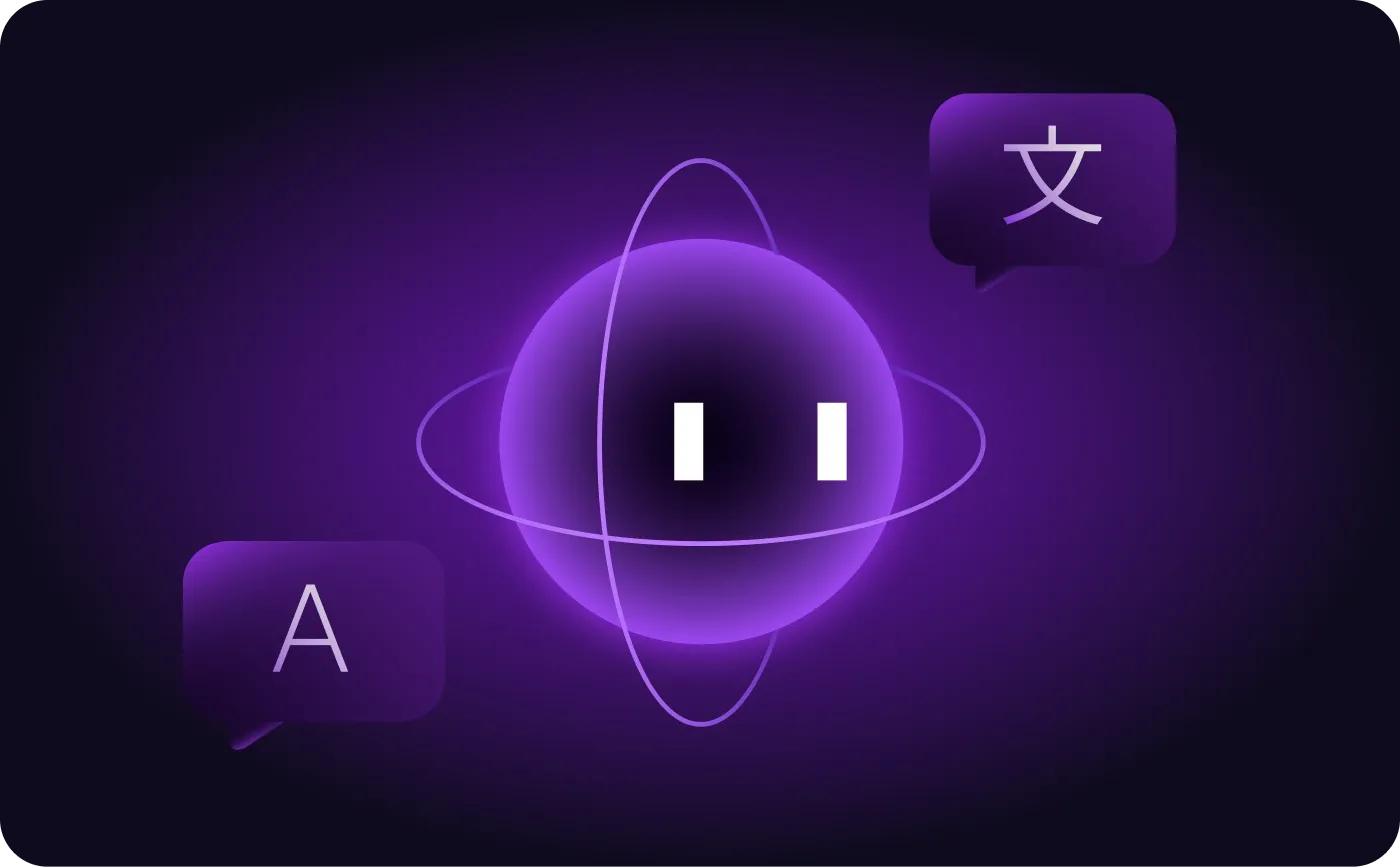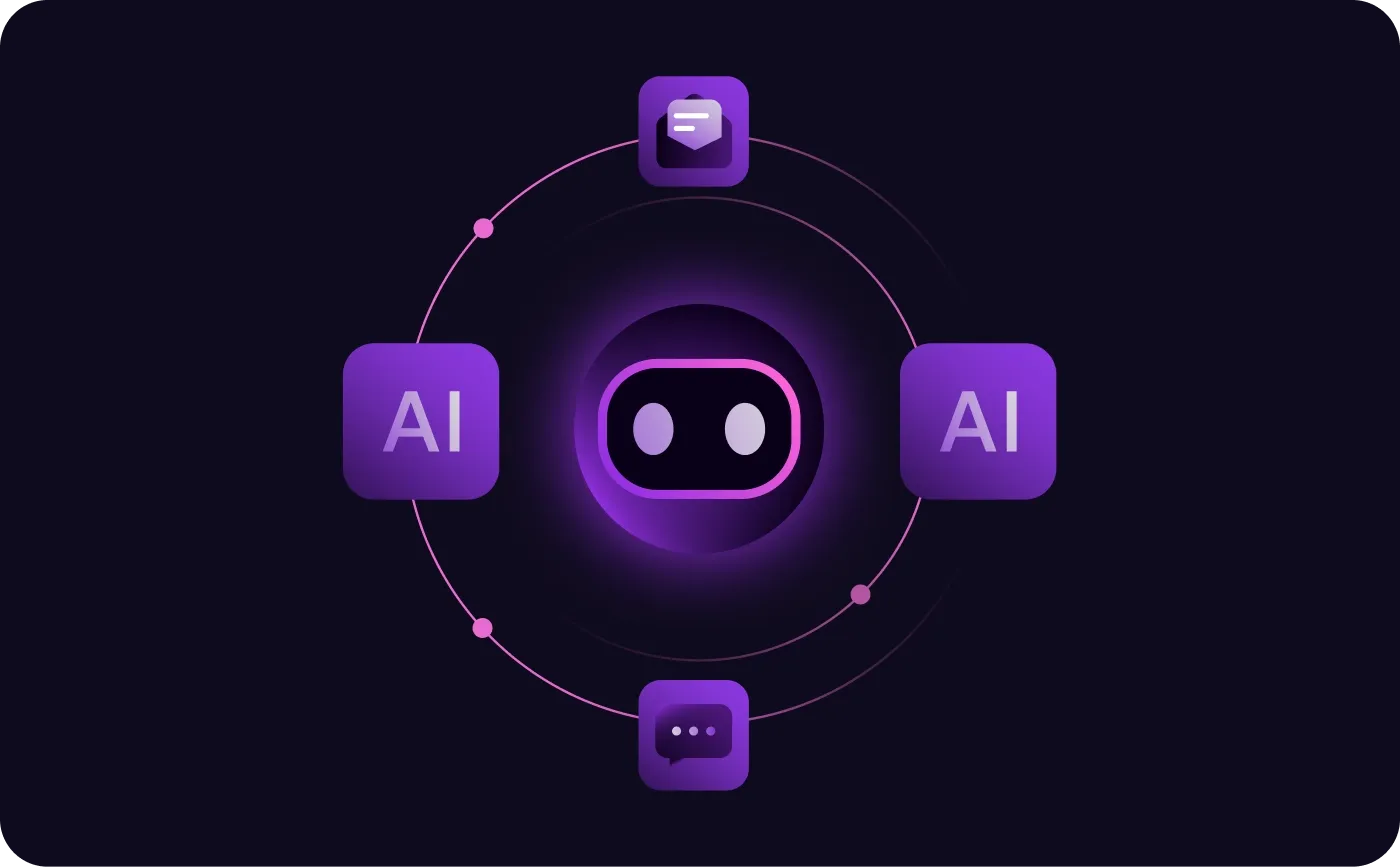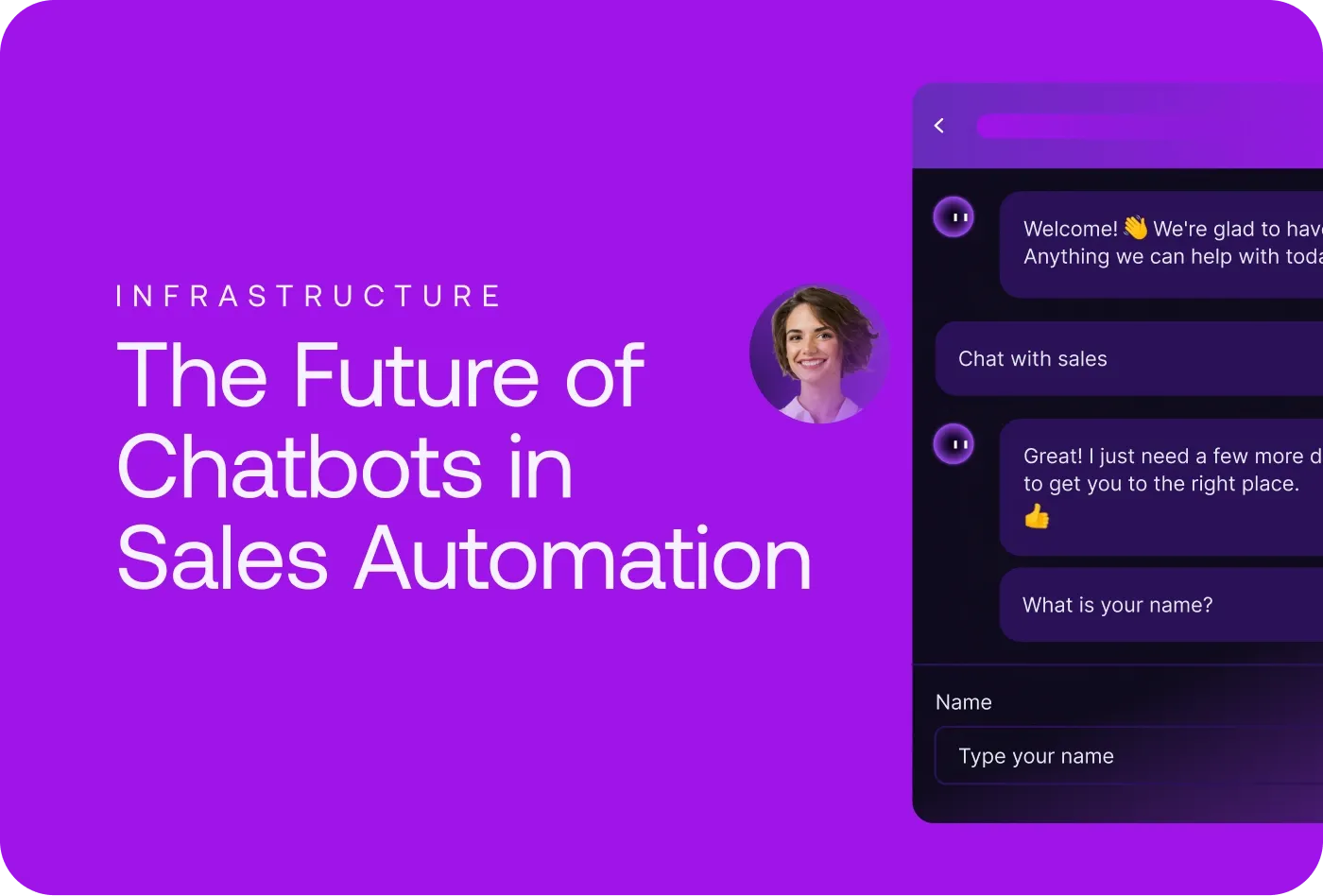In recent years, chatbots have emerged as powerful tools in the realm of sales automation, changing the way businesses interact with their customers. Currently, chatbots handle tasks such as answering common queries, guiding prospects through knowledge base articles, and providing basic customer service. These AI-driven assistants enhance efficiency and customer experience. However, their potential is far greater. The future of chatbots in sales automation promises even greater advancements that will further transform sales processes and outcomes.Today’s chatbots are already capable of scheduling appointments, booking meetings for account executives (AEs), and qualifying prospects through targeted questions. For example, a chatbot can determine if a prospect meets certain criteria before suggesting a follow-up connection with an AE. If the prospect qualifies, the chatbot can automatically schedule a meeting or place the prospect on an email subscription list for further nurturing. Additionally, chatbots can direct prospects to specialists who can answer more complex questions, ensuring that each interaction moves smoothly through the sales process.This level of automation not only reduces the workload on human sales teams but also ensures that leads are efficiently managed and followed up on promptly. By handling these preliminary tasks, chatbots free up human agents to focus on more strategic and high-value activities, such as closing deals and building relationships. The automation of routine tasks through chatbots leads to a more streamlined and effective sales process, ultimately enhancing the overall customer journey.
Advanced Features
The next generation of chatbots is poised to include advanced features such as voice-enabled interactions, sentiment analysis, and predictive engagement. Voice-enabled chatbots will allow for more natural and intuitive conversations, mimicking human-like interactions that can engage customers on a deeper level. Voice-enabled chatbots leverage advancements in natural language processing (NLP) and speech recognition to understand and respond to spoken queries, offering a more seamless and efficient customer experience. For example, a customer can ask about product availability through voice commands, and the chatbot can respond in a conversational manner.
Sentiment analysis is another exciting development. By analyzing the emotional tone of customer interactions, chatbots can adapt their responses to better meet the needs and moods of users. For instance, if a customer expresses frustration, the chatbot can respond with empathy and offer solutions to alleviate the issue. This capability will enable more personalized and empathetic engagements, fostering stronger customer relationships and improving satisfaction rates.
Predictive engagement involves using data analytics and machine learning to anticipate customer needs and behaviors. By analyzing past interactions and current engagement patterns, chatbots can proactively reach out to customers with relevant offers, reminders, or assistance. For example, if a customer frequently purchases a particular type of product, the chatbot can notify them about upcoming sales or new arrivals in that category. This proactive approach can significantly enhance customer retention and conversion rates by addressing needs before they are explicitly stated.
Seamless Integration
As chatbots evolve, their integration with other sales and marketing tools will become increasingly seamless, creating a more unified and efficient sales ecosystem. Many chatbots already interact with customer relationship management (CRM) systems, email marketing platforms, and analytics tools. A critical aspect of this integration is the chatbot's full context awareness, facilitated by its connection to a Customer Data Platform (CDP). By leveraging the comprehensive data stored in the CDP, chatbots can have full context awareness about past conversations, previous purchases, and customer preferences. This ensures that every interaction is informed and personalized, enhancing the overall customer experience.
Graph8 exemplifies the potential of this integration with its advanced, integrated CDP. In Graph8's system, all data elements, event streams, and activities of a prospect are meticulously stored. This includes historical conversations, prior summaries generated by language models (LLMs), and detailed information about the contact and the associated company. By having a chatbot fully sourced by the CDP, it gains a full memory of all interactions with the prospect, providing much more accurate conversations and guidance on the next possible steps.
For example, if a prospect has previously interacted with a chatbot about a specific product, the CDP ensures that the chatbot remembers this interaction and can follow up with relevant information or offers. If the prospect attended a webinar or downloaded a white paper, the chatbot can incorporate this information into the conversation, making the interaction highly personalized and contextually relevant. This level of integration not only improves the efficiency of the sales process but also enhances the customer experience by ensuring that every interaction feels tailored and informed.
The role of future chatbots in this integrated sales environment is exemplified by graph8 Chat, which offers advanced functionalities like lead routing, multimedia messaging, and targeted chat experiences. These capabilities are designed to enhance prospect engagement and streamline the sales process, ensuring that every interaction is productive and tailored to the individual customer's needs.
By leveraging a fully integrated CDP, chatbots can provide a seamless, informed, and personalized experience for each prospect. This integration ensures that chatbots have a complete memory of all interactions, enabling them to offer accurate guidance and next steps, thus driving better engagement and more effective sales outcomes.

AI-Powered Live Chat Augmenting SDRs
The integration of AI-powered live chat with Sales Development Representative (SDR) efforts exemplifies the transformative potential of chatbots in sales automation. Graph8's chat solution is a prime example of how this integration can enhance sales processes. This always-on AI chatbot, coupled with agent-enabled functionalities, ensures that no lead is missed and every opportunity is seized. By automating initial interactions and qualifying leads, Graph8's chat allows SDRs to focus on high-priority tasks, ultimately driving better sales outcomes.
Graph8 chat's advanced functionalities include configurable chatbot flows, multimedia messaging, and targeted chat experiences. These features are designed with the prospect's experience in mind, ensuring that interactions are engaging, relevant, and productive. Additionally, the integration of Graph8 chat with other Graph8 platform software, such as Schedule and B2B Data, provides a comprehensive solution for managing and optimizing sales interactions.
In this evolved framework, the role of the SDR transitions from being an executor to an orchestrator. AI agents take over the execution of routine tasks, allowing SDRs to guide and oversee a larger and more scalable engagement process. This shift means that while AI agents handle initial outreach, lead qualification, and routine follow-ups, SDRs can focus on strategy, relationship building, and complex problem-solving.
The smart routing capabilities of Graph8 chat ensure that leads are efficiently directed to the appropriate agents, while the system's ability to capture and qualify visitor information further enhances the sales process. This combination of AI-driven automation and human engagement creates a seamless and effective sales experience for both customers and sales teams.
The future of chatbots in sales automation is characterized by advanced features, seamless integrations, and significant industry transformations. By adopting these technologies early, businesses can stay ahead of the competition, improve efficiency, and drive better sales outcomes. The integration of AI-powered live chat with SDR efforts, as exemplified by Graph8 chat, highlights the potential for chatbots to revolutionize the sales process and enhance the overall customer experience.

Enhancing Customer Experience with Multilingual Chatbots
Language Processing
Advancements in natural language processing (NLP) have significantly enhanced the capabilities of chatbots, enabling them to understand and respond in multiple languages. NLP techniques such as machine translation, sentiment analysis, and language modeling have evolved to support seamless multilingual interactions.
Machine Translation: Modern chatbots utilize sophisticated machine translation models like Google's Neural Machine Translation (GNMT) and Facebook's M2M-100, which translate text with high accuracy and fluency. These models are trained on vast datasets containing multiple languages, allowing chatbots to translate and respond to user queries in real-time.
Multilingual Language Models: The development of multilingual language models, such as BERT (Bidirectional Encoder Representations from Transformers) and GPT-3 (Generative Pre-trained Transformer 3), has further improved the ability of chatbots to understand context and nuances in different languages. These models are capable of processing and generating text in numerous languages, ensuring that responses are contextually appropriate and relevant.
Natural Language Understanding (NLU): NLU capabilities have been enhanced to identify the intent and entities within a user's message, regardless of the language used. This allows chatbots to provide accurate and meaningful responses, making the interaction more effective and satisfying for the user.
Global Reach
Multilingual chatbots play a crucial role in helping businesses expand their reach and provide better service to international customers. By supporting multiple languages, chatbots can cater to a diverse audience, breaking down language barriers and facilitating smoother communication.
Customer Support: Businesses can offer round-the-clock support in multiple languages, ensuring that customers receive timely and effective assistance. This is particularly important for global companies that operate in different time zones and regions. For example, a multinational e-commerce platform can use a multilingual chatbot to assist customers with order inquiries, returns, and technical support in their native language, enhancing the overall customer experience.
Market Expansion: Multilingual chatbots enable businesses to enter new markets more easily by providing localized support and information. Companies can launch products and services in new regions without the need for extensive language-specific resources, allowing for faster and more efficient market penetration.
Personalized Engagement: By understanding and responding in the customer's preferred language, chatbots can create a more personalized and engaging experience. This helps build stronger customer relationships and increases satisfaction and loyalty.

Cultural Sensitivity
In addition to language proficiency, it is essential for chatbots to be culturally sensitive in their interactions. Cultural nuances, idioms, and social norms vary widely across different regions, and chatbots must be programmed to respect and adapt to these differences to avoid misunderstandings and enhance user experience.
Cultural Context: Chatbots should be equipped with knowledge about cultural context and norms. This includes understanding appropriate greetings, forms of address, and conversational etiquette. For instance, in some cultures, formal titles and polite language are essential, while in others, a more casual approach is preferred.
Local Idioms and Expressions: Programming chatbots to recognize and use local idioms and expressions can make interactions feel more natural and relatable. This requires training chatbots on region-specific language data and continually updating their knowledge base to reflect current usage.
Sensitivity to Cultural Events and Holidays: Chatbots should be aware of local holidays, festivals, and significant cultural events. This allows them to provide relevant information and greetings, contributing to a more personalized and respectful interaction. For example, during major holidays like Diwali in India or Chinese New Year, chatbots can offer special promotions or greetings in line with the local celebrations.
Bias and Stereotyping: It is crucial to ensure that chatbots do not perpetuate cultural stereotypes or biases. This involves careful monitoring and refinement of the chatbot's language models and responses to avoid any potentially offensive or insensitive content.
By integrating cultural sensitivity into their design, multilingual chatbots can provide more effective and respectful interactions, enhancing the overall customer experience. Businesses that leverage these capabilities will be better positioned to engage with a global audience, build stronger relationships, and drive customer satisfaction.
Industry Predictions
Industry experts predict that chatbots will play an increasingly central role in sales automation, driving significant changes in how businesses operate. According to a report by Gartner, by 2025, 80% of customer service organizations will utilize generative AI. This shift not only reduces operational costs but also allows sales teams to focus on more strategic and complex tasks, ultimately driving higher conversion rates.
Experts also foresee the rise of AI-powered live chat augmenting sales development representatives (SDRs). This fusion of AI technology and human engagement ensures that no lead goes unnoticed and every opportunity is maximized. AI chatbots can handle initial customer interactions, qualify leads, and gather essential information before passing them on to human agents for further engagement. This approach ensures that sales teams are always working with high-quality leads, thereby increasing efficiency and conversion rates.
Furthermore, the integration of chatbots with omnichannel platforms will become more prevalent, enabling businesses to manage all customer interactions from a single control panel. This unified approach will streamline communication processes, reduce response times, and enhance the overall customer experience.At Graph8, we are already leveraging these advancements and more. By utilizing Customer Data Platforms (CDPs), we ensure that our chatbots have full context awareness and a comprehensive memory of all interactions. This integration enables chatbots to operate with a high degree of autonomy across multiple communication channels, including email, chat, and phone.
Our future predictions extend to an even more autonomous transition for integrated multi-channel AI agents. These agents will not only handle routine customer interactions but will also seamlessly switch between communication channels, providing a cohesive and efficient customer experience. For example, a chatbot might start a conversation via web chat, follow up with an email, and conclude with a phone call, all while maintaining a consistent and personalized interaction based on the comprehensive data stored in our CDP.
By leveraging advanced AI capabilities, including natural language processing, sentiment analysis, and predictive analytics, our AI agents can provide tailored responses and proactive engagement, further enhancing customer satisfaction and driving sales outcomes. As we continue to innovate and integrate these technologies, the future of sales automation at Graph8 looks set to redefine customer interactions, making them more efficient, personalized, and impactful.
As chatbot technology continues to advance, businesses must embrace these innovations to stay competitive in the evolving sales landscape. The future of chatbots in sales automation promises a host of advanced features, seamless integrations, and industry-wide transformations that will redefine how companies engage with their customers. By adopting these technologies early, businesses can gain a significant competitive edge, improving efficiency, customer satisfaction, and sales outcomes.
Future of Machine-to-Machine (M2M) Engagement in Sales Automation
In the future, machine-to-machine (M2M) engagement will see AI chatbots acting as digital representatives for both buyers and sellers, transforming how transactions are conducted. This interaction will mimic human negotiation and decision-making processes but will be driven by data and predefined rules set by each party to achieve specific outcomes.
AI Chatbots as Digital Representatives: On platforms like graph8, AI chatbots can serve as digital sales representatives for sellers and intelligent buyers for purchasers. These chatbots will engage in real-time, data-driven conversations to negotiate terms, answer queries, and finalize transactions. For instance, a seller's chatbot can provide detailed product information and offer discounts based on the buyer's purchasing history and preferences stored in the CDP.
Data-Driven Negotiations: AI chatbots rely on comprehensive data from Customer Data Platforms (CDPs) to conduct negotiations. The seller's chatbot uses data such as purchase history, browsing behavior, and past interactions to tailor its offers. Simultaneously, the buyer's chatbot accesses similar data to evaluate offers, compare prices, and ensure the terms meet predefined criteria. This data-driven approach ensures both parties' needs and preferences are met efficiently.

Automated Processes and Rule-Based Outcomes
M2M engagement allows chatbots to automate entire sales processes, ensuring interactions are aligned with specific rules and desired outcomes set by both buyers and sellers.
Automated Negotiations: Chatbots can automate the negotiation process by adhering to rules defined by each party. For example, a seller's chatbot might have rules to offer discounts on bulk purchases or expedited shipping for loyal customers. The buyer's chatbot might seek the best price within a specified budget or prioritize suppliers with the fastest delivery times. These rule-based interactions ensure negotiations are efficient and mutually beneficial.
Transaction Management: Once terms are agreed upon, chatbots can handle the entire transaction process. The seller's chatbot can automate order processing, payment verification, and logistics coordination, ensuring timely delivery. Meanwhile, the buyer's chatbot can track order fulfillment and provide updates to the purchasing team. This seamless process reduces the need for human intervention, enhancing efficiency and accuracy.
Personalized Customer Journeys: By integrating with the CDP, chatbots can create personalized customer journeys. For example, a seller's chatbot might recognize a returning buyer and offer personalized recommendations or loyalty discounts based on past purchases. The buyer's chatbot can ensure that these offers align with the company's procurement strategy, leading to a more streamlined and satisfying transaction process.
Real-World Applications and Benefits
E-commerce: In e-commerce, AI chatbots manage customer inquiries, negotiate prices, and finalize orders. For example, a buyer's chatbot can compare offers from multiple sellers, negotiate the best price, and place an order, all while ensuring the terms meet the buyer's predefined criteria.
B2B Sales: For B2B companies, platforms like Graph8 will enable automated negotiations and transactions. AI chatbots can handle complex procurement processes, ensuring that both buyers and sellers meet their strategic goals efficiently.
Healthcare Sales: In the healthcare sector, AI-driven chatbots manage interactions between suppliers and medical facilities. For example, a hospital's chatbot can negotiate with multiple suppliers to ensure the best prices for medical supplies, while the supplier's chatbot automates order processing and delivery scheduling.
Technology Sales: Tech companies utilize AI chatbots to handle sales processes, including product customization, pricing negotiations, and post-sale support. This ensures a seamless and efficient sales experience from initial contact to product delivery and support.
The future of M2M engagement in sales automation promises significant advancements in efficiency and effectiveness. By leveraging AI collaboration and automating sales processes through platforms like Graph8, businesses can enhance their sales operations, improve customer engagement, and drive growth. As AI continues to evolve, the integration of these systems will become increasingly sophisticated, enabling more autonomous and optimized sales processes that benefit both buyers and sellers.
In this new landscape, AI chatbots acting as digital representatives for both parties will transform transactions. By harnessing the power of data from CDPs and adhering to predefined rules, companies can create more personalized, efficient, and effective sales interactions that meet the specific needs and desires of both buyers and sellers.
In summary, the future of chatbots in sales automation is bright, with advancements in voice-enabled interactions, sentiment analysis, and predictive engagement leading the way. Seamless integration with other sales and marketing tools, particularly through the use of CDPs, will create a more unified and efficient sales ecosystem. Industry predictions highlight the increasing importance of AI-powered chatbots in managing customer interactions, and businesses that leverage these technologies will be well-positioned to thrive in the dynamic and competitive sales environment of the future.

